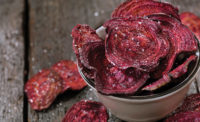In private label today, as we see elsewhere across the snack and bakery industry, clean label is still the current buzz phrase, and consumers continue to seek foods that fall into the larger better-for-you category. Shoppers are also looking for store brands to offer flavor experiences—foods that are different and unique, that think outside of the box.
And compared to national brands, private label has a few distinct advantages: Retailers often have the ability to offer a competitive price point for their own brands, and sometimes display a willingness to venture into more-adventuresome waters in terms of flavors and product formats.
Common themes
“Key trends within both the bakery and snack categories include products that are healthier and better-for-you, as well as clean-label or natural-types of products,” says Ricardo Rodriguez, marketing manager, confectionery & bakery, Ingredion Incorporated, Bridgewater, NJ. This found support in a study the company conducted in July 2017 amongst 1,100 bakery and snack consumers, which found the three top claims driving purchase intent were: “no artificial additives, preservatives or flavors”; “all-natural”; and “high fiber.”
Even foods that can never be completely clean label need to clean things up wherever possible, says Tim Lotesto, director, national key retail accounts, Alpha Baking Co. Inc., Chicago. “The switch to ‘cleaner’ versions of established items isn’t complete, and it’s also pretty established at many national retailers that new items must meet that retailer’s clean label definition.”
Clean label doesn’t always necessarily mean the absence of “bad” ingredients, though.
“We are seeing more interest in better-for-you snacks,” comments Gunther Brinkman, vice president, contract manufacturing, Ideal Snacks Corp., Liberty, NY. “Not just the absence of bad—i.e., reduced fat—but also the presence of good. Veggies, whole grains and protein are showing up in more projects that we’re undertaking for brand owners.”
At the same time, consumers are also interested in treating themselves, especially via on-the-go snacks.
“Consumers said that treating or rewarding themselves was the No. 1 reason for snacking between meals, outside of hunger,” says Jill Tomeny, senior manager, fresh category solutions, Daymon, Stanford, CT. “The key to indulgence is credibility—people want ‘calorie worthy’ rewards that live up to expectations.”
Tomeny adds that almost one-quarter of shoppers say they would buy more ready-to-eat desserts (fresh or frozen) if they were available in individual portions.
“Small servings in multi-packs with flavor variety have snack appeal for both families and catering or party occasions,” explains Tomeny.
Another widespread trend in private label is creating something unique—a snack that stands out from the major brands.
“In the snack category in particular, creating unique and differentiated textures is a trend that continues to grow—whether it’s in a chip that is ‘louder’ in terms of its volume of sound when you bite into it or a cracker that has an airy, hard type of texture that dissolves quickly in your mouth,” says Rodriguez. “Consumers are looking for new and unique types of experiences when they are snacking.”
Flavor plays a big part in these unique experiences, and consumers—especially millennials—are reaching for flavors on the shelf that might be new or unfamiliar to them.
“In snacks and bakery, we’re seeing flavors like s’mores, churro, lavender and cardamom enter as novel flavors, meaning they are just starting to appear—but they’re definitely picking up speed,” comments Jennifer Lucas, market manager, FONA, Geneva, IL. “Meanwhile, mainstays like key lime pie, gingerbread and salted caramel show no signs of disappearing from product development.”
Indulgent flavors and premium products are key themes in the snack category, notes James Hedges, senior manager, category solutions, Daymon, Stamford, CT. He adds that as U.S. consumers become more worldly and diverse, interest in international cultures continues to grow, and this is reflected in the snack category through authentic flavored products, such as popcorn flavored with miso and nori.
“Consumers are also looking for snacks that bring a multi-sensory experience—product descriptors such as smoky, grilled and charred are growing in order to bring that added culinary layer to snacking categories. Likewise, products that can extend into both the sweet and savory space, such as ready-to-eat popcorn, will continue to grow with more opportunity for flavor innovation,” says Hedges.
Private label leaders
Snacks, baked goods, and frozen appetizers and pizza products from Trader Joe’s—a retailer famous for its strong focus on private label—continue to push boundaries.
“Trader Joe’s always stands out,” says Brinkman. “They are more forward-thinking than most, and a little more adventurous in their flavor choices.”
Trader Joe’s has placed recent promotional emphasis on its Mango & Sticky Rice Spring Rolls—a continuation of its mango summer theme from last year. In August 2016, Trader Joe’s released a frozen Mango & Strawberry Flatbread, topped with arugula and a balsamic reduction.
Also on hand at Trader Joe’s these days is a Gluten Free Cheese Pizza with a Cauliflower Crust, a concept the retailer initially tested with just a ready-to-use Cauliflower Pizza Crust, which sold well. The pizza’s crust is made with a mixture of cauliflower, mozzarella cheese, potato flour, chickpea flour and brown rice flour.
Trader Joe’s is often willing to take adventuresome chances with flavors. Recent additions to the snacking lineup at the retailer include Gochujang Flavored Almonds, Caramel Ginger Popcorn, Matcha Joe-Joe’s and Crispy Crunchy Mochi Rice Nuggets.
ALDI, which recently announced a $3.4 billion capital investment to expand to 2,500 stores nationwide by the end of 2022, also has a dominant use of private label in its stores.
“ALDI does an excellent job of providing fresh baked goods,” remarks Tomeny. “Although the retailer has no in-house bakery, fresh items are delivered regularly and include an assortment of sweet and savory products.”
Tomeny notes that ALDI’s liveGfree brand positions the retailer to capture a market of health-conscious consumers by providing quality products at lower prices. This year, ALDI released Gluten Free Double Chocolate Brownie Soft Baked Cookies under its liveGfree label. It also offers a Snickerdoodle version.
“They manage to keep their stock new by rotating thematic items,” says Tomeny. “During Octoberfest, for example, they might have German cakes and cookies.”
Amazon’s recent acquisition of Whole Foods Market could help catapult its store brands, notably its budget-friendly 365 Everyday Value brand, to a wider audience.
“I think Whole Foods, with Amazon as an extension of their distribution network, will start to make waves,” says Brinkman.
“Amazon’s e-commerce reach and scope, with the quality and assortment of Whole Foods stores, has the potential to force all retailers to reevaluate their most-basic consumer strategy,” comments Brian Sharoff, president, PLMA, New York.
This year, Whole Foods released Organic Oatmeal Cookies and Organic Wheat Crackers under its 365 brand. Other notable additions to the line include Organic Super Seed Rolled Tortilla Chips, Ancient Grains & Flax Pita Chips and Sweet Chili Ginger Potato Chips.
Walgreens has also continued its store brand innovation. This year, the retailer released All Natural Blueberry Pomegranate Trail Mix Crunch under its Delish brand, as well as a Pecan & Almond Caramel version. In the frozen section, shoppers can find Chicken Potstickers, Mini Chicken Egg Rolls, fried Dill Pickle Chips and more under its Nice! Brand. Among its assortment of store brand snacks and treats, Walgreens offers Delish 4 Star Maple Leaf Creme and Sea Salt Caramel Cheesecake cookies.
“This is a really exciting time in the private label world,” says Lotesto. “For a long time, the primary private label strategy seemed to be ‘copy the big sellers at slightly lower quality and much lower cost.’ For many retailers, this is no longer acceptable, and retailers are expecting their private label brand to beat the benchmark when there is one.”
New kid on the block
German supermarket chain Lidl, which has over 10,000 stores across Europe, recently expanded into the U.S. and is going to give private label a dose of competition—in particular, ALDI, which has a very similar sales strategy.
“Lidl’s disruption will elevate the consumer solutions gap. Lidl is certainly positioned to trump ALDI in the baked goods category because of its in-house capabilities. The aroma that emanates from Lidl’s bakery simply cannot be duplicated by delivered items,” says Tomeny.
But this will likely prompt ALDI to respond with new strategies. “Lidl’s entry into the U.S. will up ALDI’s already strong game,” says Brinkman. “I wouldn’t be surprised to see the two of them give the top traditional retailers a run for their money.”
As of August, Lidl had opened 21 stores this year, all in North Carolina, South Carolina and Virginia.
“Lidl’s unbranded center store private label will have appeal to ‘brand agnostic’ millennials, and takes a different approach from most U.S. retailers,” says Tomeny. “Their organic and gluten-free brands are new to the Lidl universe. These standalone brands show breadth of assortment and allow Lidl to play to the important U.S. organic segment, while giving its store the ability to better compete with ALDI, Walmart and others.”
Lidl’s arrival has already shaken up Kroger, which filed a lawsuit in July claiming Lidl’s store brand, dubbed “Preferred Selection,” infringes on Kroger’s “Private Selection” store brand. A U.S. district judge denied Kroger’s request for an injunction, noting that “private” and “preferred” have separate definitions, and a bench trial date has been set for January 2018.
Lidl’s entry into the U.S. market might force other retailers to expand their store brands, in both assortment and quality, in order to be competitive, notes Sharoff. “Lidl has been planning its American strategy for more than five years, and retailers here have undoubtedly been aware of its intentions.”
However, Lidl’s “disruption” may end up lending a helping hand to the private label industry as a whole—and benefitting consumers.
“Lidl’s arrival may lead to an increase in consumer interest in private label products, which could very well be beneficial for private label manufacturers, retailers strong in private label and consumers,” notes Lotesto.
Specialized spins
Retailers have continually ramped-up their assortment of clean label, organic and natural store brand products.
Whole Foods Market has long maintained a list of prohibited ingredients in the foods it carries. And in 2015, ALDI reformulated all of its private label products to be free of synthetic colors and partially hydrogenated oils (PHOs).
Most recently, this past July, Target announced that by the end of 2018, all of its private label kids’ food products will be free of artificial flavors, sweeteners, colors, preservatives, trans fats and high-fructose corn syrup. Right now, about 75 percent of kids’ foods in Target’s Market Pantry and Simply Balanced labels meet that criteria.
“Retailers are either reformulating their current brands or developing healthier version of their existing brands in order to meet growing consumer trends,” says Rodriguez. “Retailers are trying to use ingredients that consumers understand and consider to be clean or ‘natural-like’—for example, flour, corn starch, rice starch, tapioca starch and potato starch.”
The changeover to clean label might not be easy, though, remarks Brinkman. “Traditional retailers will struggle to significantly expand their organic private label presence until they gain credibility as suppliers of organic brands,” he says. This is easier for retailers already associated with natural and organic foods. “I expect Whole Foods will be successful in expanding their organic private brands online via Amazon, making Amazon a major player in organics.”
Many retailers are choosing to partner with local bakeries to provide natural and organic options, says Tomeny. “The combination of local and clean can really create destination segments. With natural food coloring becoming easier to use and more available, more decorators are choosing them for cakes and cookies,” she adds.
However, especially in the commercial bread category, “clean” labels have muddy borders, notes Tomeny. “Brands will tout no HFCS or artificial flavors, but still use preservatives or artificial dough conditioners. It can be a real challenge for consumers to understand these label distinctions.”
All being said, retailers are continuing to strive to get consumers’ attention under its private label brands, and innovation will continue to be king.
“Store brands are willing to experiment with flavors more often, trying out unique tastes like matcha green tea or lavender,” says Lucas. “They want to grab the interest of consumers, and keep it.”











